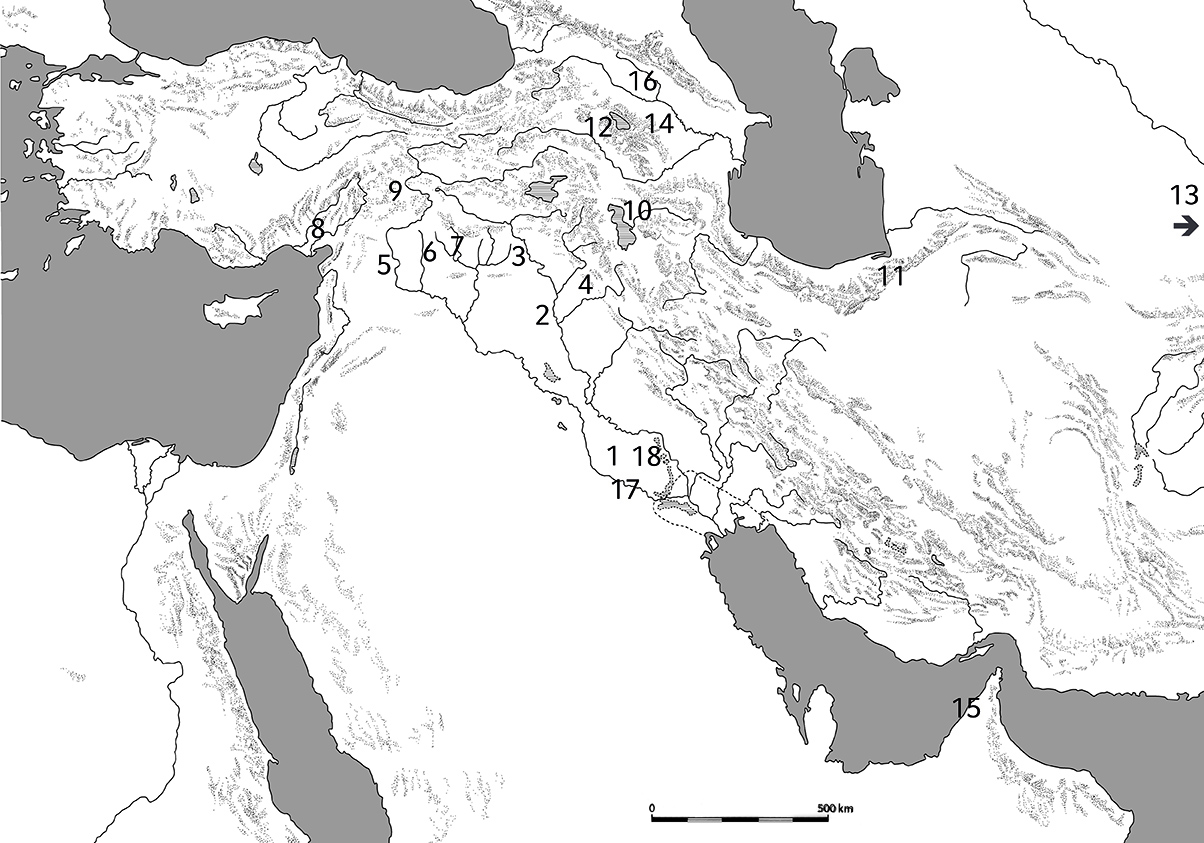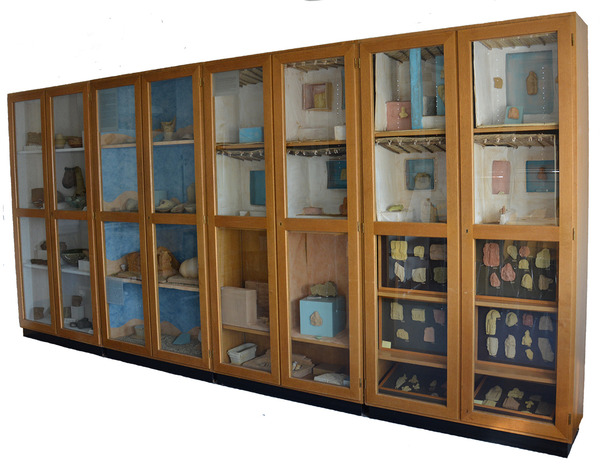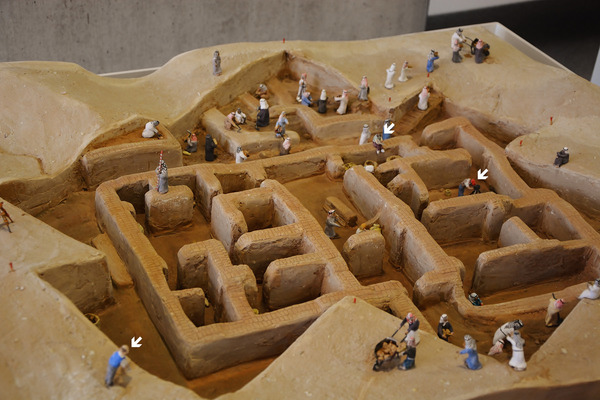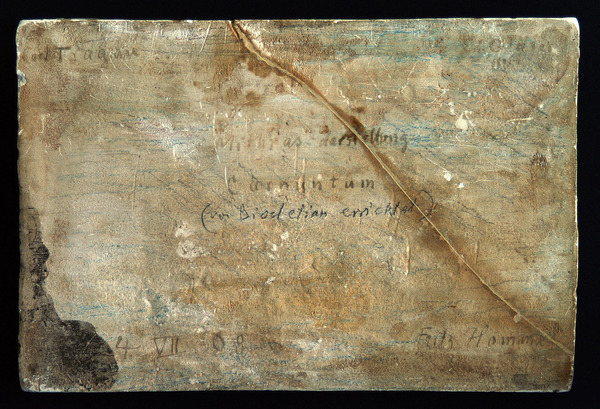Collection
Valorisation
The history of the Institute collection‘s extends over nearly 50 years, based above all on gathering objects from the excavations of the Institute.

1 Isin
2 Assur
3 Tell Hamad Agha
4 Sharizor Project
5 Tall Bazi
6 Tell Chuera
7 Tell Halaf
8 Sirkeli Höyük
9 Ziyaret Tepe
10 Bastam
11 Gohar Tappeh
12 Oshakan
13 Tilla Bulak
14 Karacamirli
15 Al-Sufouh 2
16 Gumbati
17 Ur
18 Fara
Since 2016, the collection has been with financial support of the LMU. In the progress of work, repeatedly amazing objects are found, like the letter to Barthel Hrouda, informing him about his appointment as a full professor. Inquiries on the origin of pieces in the collection, coming from other sources than the Institute‘s projects, highlight the intricate ways of its establishment: The reverse of the Mithras plaque bears various notes, above others the name of the presumed former owner, Fritz Hommel. Also a date in the year 1908 as well as the assumed origin of the item are given.
The collection’s objects are important elements of the educational concept of the Institute. In the context of valorisation students try to sharpen the public awareness for the existence of the collection. Not least its island position among Munich’s museums makes it unique; the recent political development in the Middle East has contributed to the growing importance, too.


 Institute's collection as shown until now. Nearly all items in the collection are replica, mostly of finds from Isin.
Institute's collection as shown until now. Nearly all items in the collection are replica, mostly of finds from Isin. Model of a big building from the 1st half of the 2nd mill. BC excavated in Isin.
Model of a big building from the 1st half of the 2nd mill. BC excavated in Isin.